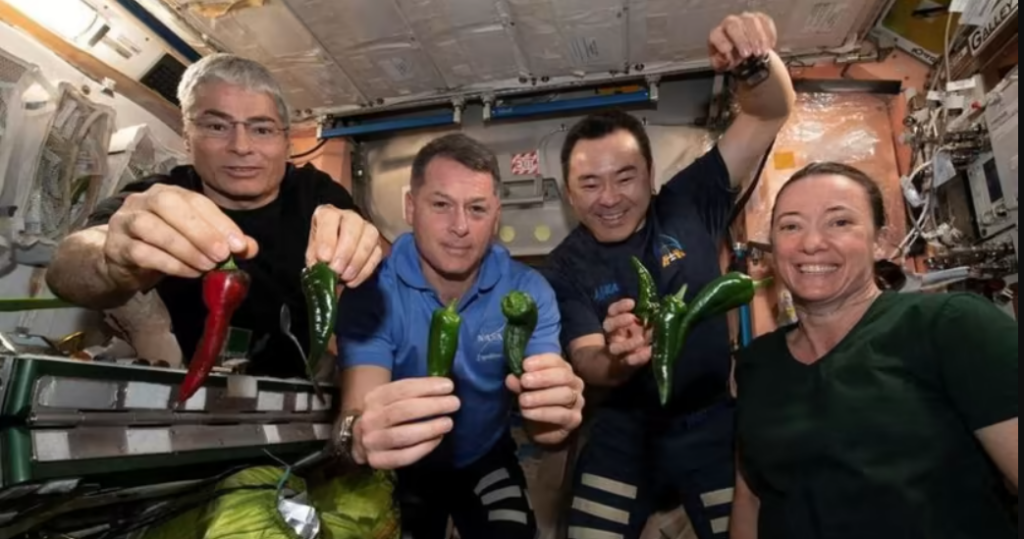In “The Martian,” Matt Damon plays an astronaut who survives on human feces-grown potatoes on Mars.
A New York business that creates carbon-negative aircraft fuel is changing intergalactic cuisine. It reached the finals of a NASA-sponsored competition to create next-generation astronaut food innovations.
The privately held Air Company of Brooklyn has developed a method of recycling astronauts’ exhaled carbon dioxide to produce yeast-based nutrients for protein shakes for long-duration deep-space missions.
“It’s definitely more nutritious than Tang,” said business co-founder and Chief Technology Officer Stafford Sheehan, referring to John Glenn’s 1962 powdered drink.
Sheehan, who has a Yale University degree in physical chemistry, claimed he created his carbon-conversion process to make high-purity alcohols for jet fuel, perfume, and vodka.

Sheehan modified his technology to make edible proteins, carbs, and lipids for NASA’s Deep Space Food Challenge.
SEITAN TASTE
Sheehan said the NASA contest’s single-cell protein drink is like a whey protein shake. Sheehan compared the taste to seitan, an East Asian tofu-like meal produced from wheat gluten that vegetarians use as a meat alternative.
“And you get that sweet-tasting, almost malted flavor to it,” Sheehan said in an interview.
The same procedure may make carbohydrate-heavy breads, pastas, and tortillas as well as protein beverages. Sheehan expects additional sustainably produced foods to accompany his smoothie on trips for diversity.
NASA awarded $750,000 to eight winners in the second part of its food competition this month, including the company’s unique AIRMADE technology. A tournament final is coming ahead.
Other winners included a bioregenerative system from a Florida lab to grow fresh vegetables, mushrooms, and even insect larvae for micronutrients; an artificial photosynthesis process from California to create plant- and fungal-based ingredients; and a gas-fermentation technology from Finland to produce single-celled proteins.

The contest winners will get up to $1.5 million.
They’re a far cry from Tang and the freeze-dried food astronauts ate in the early days of space flight, but few will make the Michelin Guide for exquisite cuisine.
The new food-growing methods are more appealing and healthier than Matt Damon’s imaginary poop-fertilized potatoes in “The Martian.”
“That was taking an idea to an extreme for a Hollywood movie,” said Ralph Fritsche, space crop production manager at NASA’s Kennedy Space Center in Florida, adding that human excrement “is not the complete nutrient source that plants need to grow and thrive.”
NASA has struggled to feed people aboard low-Earth orbit spacecraft. For two decades, International Space Station personnel have eaten largely packaged meals with some fresh vegetables supplied on frequent re-supply trips.
NASA says ISS workers have grown lettuce, cabbage, kale, and chilli peppers.
As NASA prepares to return men to the moon and explore Mars, the need for self-sufficient, low-waste food production has grown.
Fritsche said space-based food production can help feed Earth’s rising population in an era when climate change is making food scarcer and tougher to produce.
“Controlled environment agriculture, the first modules we deploy on the moon, will have some similarity to vertical farms that we’ll have here on Earth,” Fritsche added.
Sheehan’s technique mixes electrolyzed hydrogen gas with carbon dioxide cleansed from astronauts’ air. The alcohol-and-water combination is supplied to yeast to generate single-celled proteins and other nutrients.
Sheehan stated the carbon dioxide and hydrogen feed the yeast alcohol, “and the yeast is the food for the humans.”
“We’re not re-inventing products,” Sheehan said. “We’re just making them more sustainable.”

